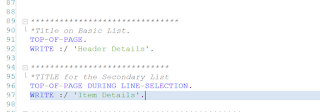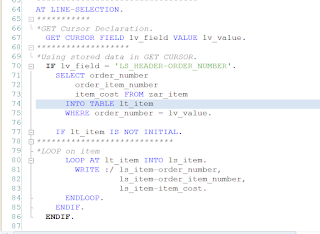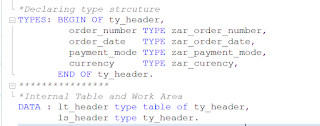Mastering ABAP Events: Unraveling Interactive Classical Report Events and Control Break Statements

Welcome back everyone, We were discussing about Interactive Classical Report Events, So let’s continue it. 3. Top of Page During Line-Selection :- This event calls when the first WRITE statement occurs in a program for a page on secondary list. The purpose of this event is to provide title/header at the beginning of a new page on secondary list. Let’s take a requirement to understand it more clearly. Requirement :- I want on the first page my header details should be displayed and on the second page item details should be displayed. Also there should be a title for the secondary list. Code :- ************************************************************* *Start of Program *Declaring Strcutrure for header TYPES: BEGIN OF ty_header, order_number TYPE zar_order_number, order_date TYPE zar_order_date, payment_mode TYPE zar_payment_mode, currency TYPE zar_curency, END OF ty_header. ********************* *Internal table an...



